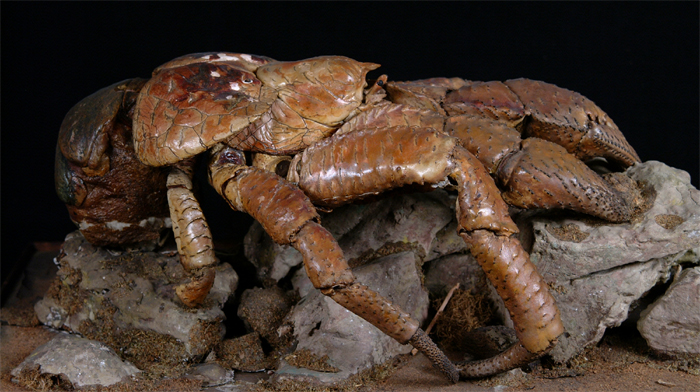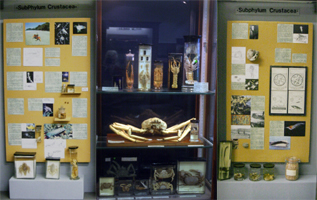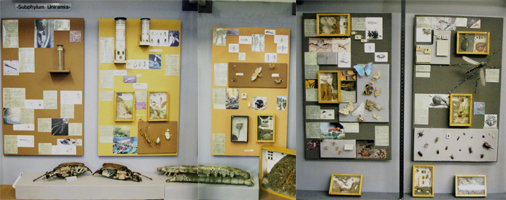
PHYLUM ARTHROPODA
The Phylum Arthropoda is the third of the major phyla to colonise the sea and to establish successfully on land. With almost a million species described to date, the Arthropods make up the largest phylum in the Animal Kingdom. Four out of five animal species on earth today are arthropods. Ninety percent of arthropods are insects; the other ten percent of this diverse and prolific group includes crabs, spiders, scorpion, and a host of lesser-known animals. Arthropods derive their name from their jointed legs.
The central distinguishing feature of an arthropod is the chitinous exoskeleton or cuticle. The phenomenal success of arthropods can be attributed, at least in part, to the exoskeleton - a suit of armour varying in form from the smooth shiny coat of a beetle, to the chalky shell of a crab or the soft flexible bag covering a caterpillar. Any potential restriction of growth conferred by the rigid cuticle is overcome by periodic moulting or ecdysis of the exoskeleton. The exoskeleton protects the internal organs, provides something for muscles to pull on, defends against predators, parasites and pathogens, isolates the animals from the environment and protects land arthropods from desiccation. In terrestrial arthropods it also provides the material with which to develop respiratory structures – the lungbooks of spiders, the tracheae of insects.
|
Arthropod origins, evolution and success on land
Arthropods represent the evolutionary pinnacle of the protostomes. It seems likely that arthropods evolved from the same root as the annelids and that the three main lineages of arthropods - the Chelicerata, the Crustacea and the Insecta - evolved independently from a common ancestor. Little is known of the ancestors of living arthropods. They may have resembled living onychophorans like Peripatus, an animal with a distinctly annelid-like body wall and excretory system but arthropod-like appendages and trachea.
The following factors no doubt contributed to the success of terrestrial arthropods as they adapted to solve the problems of support, stability, desiccation and respiration associated with living in air:
- Development of the exoskeleton, which gives support and shape to bodies in air;
- The waxy cuticle of arachnids and insects prevents water loss and protects against desiccation;
- Adaptability of body structure and organs;
- Small size and motility, including flight in insects, confers an advantage over vertebrates;
- Stability for a light body, due to being ‘swung low’, allows for long legs to increase speed;
- The evolution of a tracheal system of tubes for respiration, which carries air around the body allowing gaseous exchange to occur;
- Care for the young - making nests and cocoons, providing food stores;
- Giving birth to live young;
- Existence of a huge range of terrestrial niches: the majority of arthropods are only 3-4 mm long and their habitats are correspondingly small;
- Absence of other terrestrial invertebrates competing for space and food.
The life cycles of terrestrial and marine arthropods differ markedly. Adult marine arthropods are usually sedentary or bottom-living depending upon planktonic larvae for dispersal. Vast numbers of offspring are produced as so few survive without being eaten by other members of the plankton. Adult terrestrial arthropods are motile and can range over relatively large areas (often by flying). They only produce relatively few larvae because the adults build shelters to protect them as they grow to adulthood. Such protective behaviour has been perfected in insects where adult and larvae live together in structures made of insect products or building material gleaned from the environment. On land, arthropods farm, hunt and trap as a way of providing sustenance for their young and themselves.
|
Select an area or choose a link for more information.










